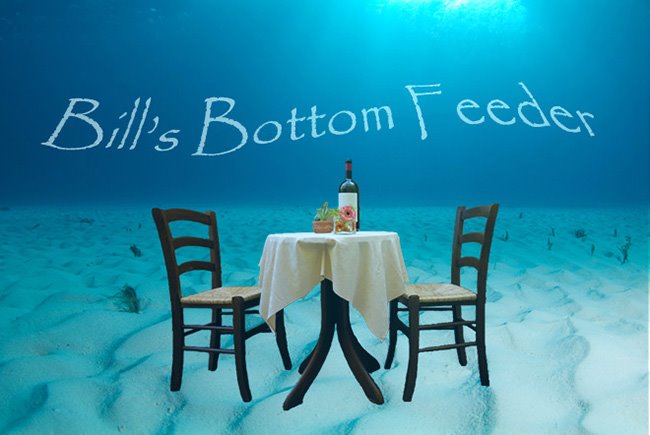Mine is not quite as philosophically deep as Schindler’s.. and if I behave, I might
come to the end of the current “list”, although I just added on to the end..
Let’s check off a few bunnies and then tackle more food
related things…
Although not to say Jelly
Beans aren’t a food, but just an update and a rare find. Got out a fresh bag the other day, and sorted
them as usual
Which brought my total statistical base to 1733 beans (stats
later), but in going through the beans, looked what turned up in the licorice
section (pretty much full size!)
A rare Siamese bean, seldom if ever seen. I’m sure it will be worth $$$ someday or
maybe I’ll donate it to the Smithsonian (if I don’t eat it first)
Sports up to
here. It is amazing to me how some
people are just consumed by the NFL. They
call up the sports talking heads and go on and on about if “my team” drafts so-and-so,
“we’ll” need more support in the middle of the D line, so “we” should trade…. Blah,
blah, blah don’t these people have a life?
Guess not.
And beginning the transition to real food stuff, what the
hell is a “Maryland Crab Cake” that
appears on menus coast to coast, Iowa, Wyoming, etc. Is it purely where the meat comes from? Has
to be Callinectes sapidus? I was looking at a box of frozen “Maryland Crab
Cakes” the other day from Philips a venerable seafood house, and if you read
further, you would come across the phrase “Maryland Style Crab Cakes.
First I wanted to relate a little dictionary o’diets I found in one of my mags (Cuisine at Home) I’ll
just pass some along for our general edification:
Paleo (I think a
contraction of “Paleolithic”) diet. (caveman, stone age, etc.)
A paleo diet is a dietary plan based on foods similar to
what might have been eaten during the Paleolithic era, which dates from
approximately 2.5 million to 10,000 years ago.
A paleo diet typically includes lean meats, fish, fruits,
vegetables, nuts and seeds — foods that in the past could be obtained by
hunting and gathering. A paleo diet limits foods that became common when
farming emerged about 10,000 years ago. These foods include dairy products,
legumes and grains. Might be also dubbed
“glutton” diet, although I do know a couple of devotees who swear by it,
publish pictures of gluttonous hunks of beef, etc.
Keto(genic) diet,
is all about one thing: fat, obtaining 70-80% of their calories from fat while
eating very few carbohydrates (<50 15="" 20="" amounts="" and="" calories="" day="" grams="" moderate="" of="" percent="" protein="" span="" style="mso-spacerun: yes;" total="">
Explanation of benefits have to do with
forcing your body into Ketosis, getting primary fuel source from ketones, and
on and on. I don’t personally know of any followers.
Whole30 diet.. “markets
itself as a method to reset your diet, give your digestive system a break, and
help you form a new relationship with food”.
Excuse me? You are told to cut
out foods that are known to upset some tummies or are generally unhealthy. No
processed or packaged foods, natural and artificial sugars, alcohol (WHAT??
Okay, on to the next diet!!) and after 30 days you slowly add food groups like
beans and whole grains. Sounds tough to
follow..
Vegan and Vegetarian
diet(s) Kind of our old friends.
Vegetarians come
in many flavors (ha ha) with such sub-categories as:
Lacto-ovo vegetarians: Vegetarians
who avoid all animal flesh, but do consume dairy and egg products.
Lacto vegetarians: Vegetarians
who avoid animal flesh and eggs, but do consume dairy products.
Ovo vegetarians: Vegetarians
who avoid all animal products except eggs.
Vegans: Vegetarians who avoid all animal and
animal-derived products.
Those who do not eat meat or poultry but do consume fish are
considered pescatarians, whereas part-time vegetarians are often
referred to as flexitarians.
Vegetarians and vegans
differ in their beliefs regarding the use of animals by humans. This is why
some vegetarians may consume animal-derived products, whereas vegans do not.
Feeder Diet: All things in moderation.
“Fake” Meat
Okay, I have been avoiding this last topic for quite a
while, because I was not sure how to address it. It was highlighted in one of my other foodie
magazines “Restaurant Hospitality” from October! And I have been meaning to
pass it on. I have used a portion of the cover once or twice as a tease, but
here’s the full shot.
It’s not so much the eye grabbing riff on “show me the meat”;
or “where’s the beef” as it is the sub-headline: “Plant-based Proteins Capture
the Mainstream”. It would be easy for
the Feeder to latch onto the “Fake” craze coming into our lexicon lately by
fearless leader, meaning “anything I don’t want to believe, no matter if it is
an indisputable matter of fact, is “Fake”, i.e., a lie”. So it would be easier
to poke fun at “fake” meat, going off on “why bother, eat the real stuff”,
using phrases like “it almost” tastes
like beef” and other dismissive statements.
But, the real fact is that there are many people who for medical, or
real conviction care what goes into their mouth and bodies and where it comes from, see
previous paragraphs.
The article in Hospitality begins with: “It began with Vegans, but now meatless
burgers have been embraced by meat eaters looking to reduce their intake of
animal flesh both for health reasons and to mitigate global warming” a
restaurateur in San Francisco founder of “Monty’s Good Burger” who developed
the meatless “Impossible Burger” made from ingredients such as wheat protein,
coconut oil and heme (a protein in hemoglobin) that makes the product appear to bleed! . The meatless concept has taken hold, as
evidenced by none other than that paragon of “greasy burger joints” White
Castle which introduced an Impossible Burger slider into all of its 377 “restaurants”
in 13 states; topping the original slider’s price of 73 cents to a whopping (no
pun intended) $1.99 apiece! Other venues
and “joints” are following suit, such as Next Level Burger in Bend, Oregon,
Carl’s Junior, and reports are that the Golden Arches is in development
Ending with further proof that meatless proteins are “capturing
the mainstream” is an article in the WAPO from mid-April by Tim Carman, Tom Sietsema’s
understudy and probably heir, entitled “Burger King’s Impossible Whopper tastes
even better than the real thing”
My old home town St. Louis has been selected as the test
market for the Impossible Whopper (not Burger), and if interested you should
read the whole piece
His bottom line is not so glowing, but maybe realistic
“After eating more
than a dozen Impossible-branded burgers in St. Louis — including Red Robin’s
thick-cut version, which had none of the chin-dribbling juices you desire from
a big, sloppy grilled hamburger — I’ve come to the conclusion that the
producer of this meat alternative is a master illusionist. After one bite, you
swear the Impossible patty tastes just like beef. After a second bite, you
begin to sense the illusion behind the science. After a third, you’re ready to
invest in the whole enterprise. With time, the illusion becomes its own
alternative reality: The product is close enough to beef that your brain is
willing to fill in the rest of the flavors, even if somewhere in the dark
recesses of your cerebral cortex, you know it’s all a lie.”
Stand by America!!
That’s a wrap!
Well, that’s about the end of my list. Somewhat caught up. Hope you weren’t bored. In the future, I have been promised some of
the Gold stuff to use in cooking, a couple of reviews of “Slice” in Leonardtown,
and I’m sure they’ll just keep coming.
So keep reading and
DFD






















































